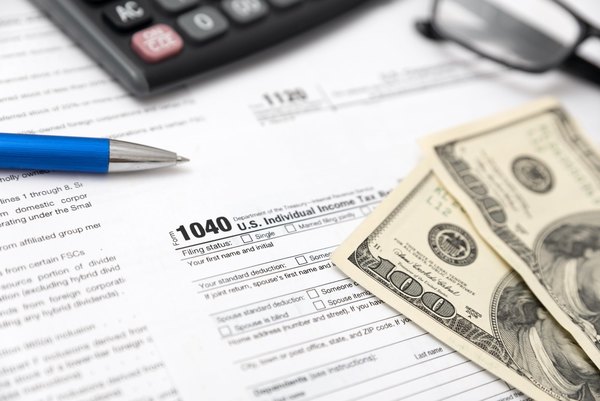Working as an independent contractor has its perks, but what about paying taxes?
Your employer always handled your taxes for you – paying one half of your social security tax and taking taxes directly from your paycheck. You may have even received a tax refund when you worked for someone else because you overpaid your taxes.
When you are an independent contractor the responsibility falls on you and that includes paying the employer’s half of the independent contractor taxes, because you are the employer now. While it seems like your tax liability goes up tremendously, it’s not as bad as it seems. There are plenty of deductions and ways to lower your liability.
The key is to know how to file your taxes as an independent contractor, what you should look out for, and the type of help you should get.
How do You File Taxes as an Independent Contractor?
Independent contractors have what’s called ‘pass-through income.’ In other words, your business income ‘passes through’ to your individual tax returns. You claim the income on your return, pay both sides of the social security tax and file your taxes as normal.
Independent contractors claim their income on Schedule C ‘Profit or Loss From Business.’ You’ll also complete Schedule SE ‘Schedule for Self-Employment Tax.’ This income transfers directly to your 1040 and affects your adjusted gross income and tax liability.
How Often Does an Independent Contractor Pay Taxes?
Because you don’t have an employer withholding taxes from your paycheck, you are responsible for paying your taxes. Rather than sending the money in every pay period, you can send Estimated Payments in quarterly. It takes only a few minutes online to set up your payment, which is due on the 15th of every January, April, June, and September.
How Much Estimated Tax Should You Pay?
It’s important to pay the right amount when filing your Estimated Payments. A safe rule is to pay 100% of your last year’s tax liability. If you owed $5,000 last year, divide that into four payments, and pay at least that much in each quarter ($1,250). If you made more than $150,000 last year, you’ll need to pay 110% of last year’s tax liability. If you meet either of these requirements, you’ll avoid paying the Estimated Tax Penalty for not paying enough taxes.
At the very least, you must pay 90% of what you may owe to avoid the penalty. This is a good tactic if you know beyond a reasonable doubt that you’ll make less money this year. Of course, if you know you’ll make more, it makes sense to pay 100% of what you would owe this year, which you can figure out using IRS calculators right on their site.
What is the Self-Employment Tax Rate for Tax Year 2019?
The tax rate for income you earned as a self-employed taxpayer in 2019 is 15.3%. This applies to the first $132,900 you made. Any income beyond that, you must add 2.9% on the excess. This covers both sides of the Social Security tax and Medicare tax.
Ways to Lower Your Independent Contractor Taxes
Fortunately, you can lower your independent contractor taxes by taking some of the most common deductions allowed by the IRS.
- Home office deduction – If you operate your business out of your home, you may be able to deduct a portion of the costs paid to live in and maintain the home. This includes a portion of the housing payment, real estate taxes, utility costs, and maintenance costs. You must calculate the portion of your home that you use exclusively for your business – it can’t be a shared area that you also use for personal business.
- Purchase of equipment or materials – You may write off the cost of items you bought to run and maintain your business including computers, printers, phones, stationery, stamps, and any other materials necessary.
- Travel and meal costs – If you travel to meet a client or for any other business purposes, you may deduct the cost of the travels as well as your meals during that time. This is only applicable if the entire trip is for business purposes, not personal.
- Education – If you take courses to further your ability to run and maintain your business, you may be able to deduct the cost of the tuition and materials.
How do you Calculate Your Self-Employment Tax?
Calculating your freelancer taxes isn’t as hard as it seems. It starts with your net earnings. This is your business income minus allowed expenses. Once you have your self-employment net earnings, you can calculate 15.3% of that amount if you made less than $132,900. If you made more than $132,900, this difference is subject to a 2.9% tax rate.
Should you Get Professional Assistance?
Filing independent contractor taxes isn’t hard, but it can be a lot of work. Plus, there is always the chance that you may miss an important deduction, such as the Qualified Business Income deduction which allows you to deduct up to 20% of your pass-through (self-employment) income, reducing your tax liability. It’s a good idea to have a professional look over your taxes to ensure that you are getting the deductions you are entitled to receive.
The most important thing you can do is file your taxes on time and make estimated payments. Your independent contractor taxes are treated differently than those when you work for someone. You are responsible for the on-time payment or you face penalties and fees that you could otherwise avoid. Make sure you know what’s required of you as a self-employed taxpayer and get your taxes filed on time.







